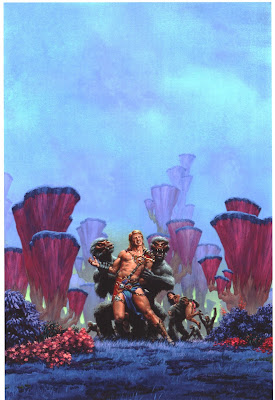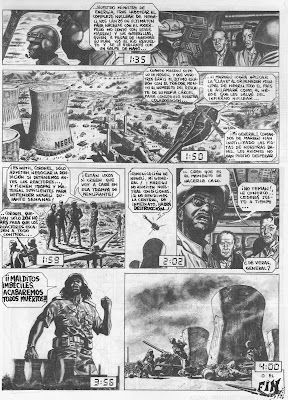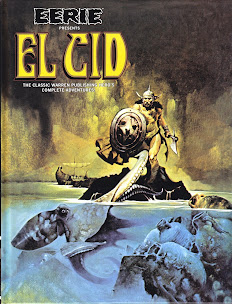Book Review: 'The Penal Colony' by Richard Herley
Richard Herley (b. 1950) published his first novel, 'The Stone Arrow', in 1978 in the U.K. He followed it up with two more novels in what came to be known as 'The Pagans' trilogy. 'The Penal Colony' first was published in the U.K. in 1987; this Ballantine Books mass-market paperback version was published in the U.S. in June 1989.
'The Penal Colony' was made into a 1994 feature film, titled No Escape, starring Ray Liotta.
Herley continues to published novels, mainly as ebooks, in the drama, suspense, and crime genres.
'The Penal Colony' is set in 1997, when the U.K. government - no doubt inspired by the film Escape from New York - has decided to convert some of its offshore islands into maximum security prisons. The rules on these islands are simple: 'once you go in, you don't come out'. A variety of high-tech surveillance and monitoring measures ensure that one ever escapes, save as a corpse bobbing in the cold Atlantic.
As 'Colony' opens the protagonist, Anthony John Routledge, is delivered to the island of Sert. Charged with the rape and murder of a young woman, Routledge - like the other inmates sent to Sert - is a 'Category Z' prisoner, condemned to live the rest of his life on the windswept island.
The 500 inmates on Sert have set up two competing, and antagonistic, societies. One society, lodged on the southern tip of the island, is simply known as The Village, and is run by an overlord known as The Father. The other society, lodged on the northern end of the island in Old Town, is run by the most powerful and ruthless of the Category Z prisoners.
Sick and disoriented from the drugs used to pacify him for transport from the mainland to Sert, Routledge, upon awakening in a hut in The Village, is given a cruel choice: if he can survive for 6 days on his own outside the confines of The Village, he can petition to be admitted to its society. Otherwise, he will have no choice but to take his chances at the hands of the felons lodged in Old Town.
Completely unprepared for the reality of life in the Penal Colony, the hapless Routledge must struggle to survive in the wilderness of Sert.......where both the Wild Men - who eke out an existence in the inhospitable terrain - and the violent residents of Old Town are perfectly happy to use any 'New Meat' for their own depraved purposes.......
I first read 'The Penal Colony' when it was released in paperback in 1989 and thought it a very good novel, and in the ensuing 31 years my opinion hasn't changed: it's a genuine 5 Star awardee.
Richard Herley's prose style is declarative and unadorned, and his plotting straightforward, propelled by sharp episodes of violent action. The brutality of life lived under the rule of criminals who think nothing of casually disposing of one another lends a note of intensity to the struggles of Routledge and, by extension, the society making up The Village, the sole outpost of sanity on Sert.
The novel's ending avoids contrivance; there are no conveniently-timed Pardons to be issued by the UK government, and no clandestine escapes by helicopter. Indeed, salvation from Sert, if it can be gained at all, requires a uniquely cerebral type of desperation.
While both hardcover and softcover versions of 'The Penal Colony' now are hard to come by, if you see a copy available for a reasonable price, it's well worth picking up.

















































.jpg)





















